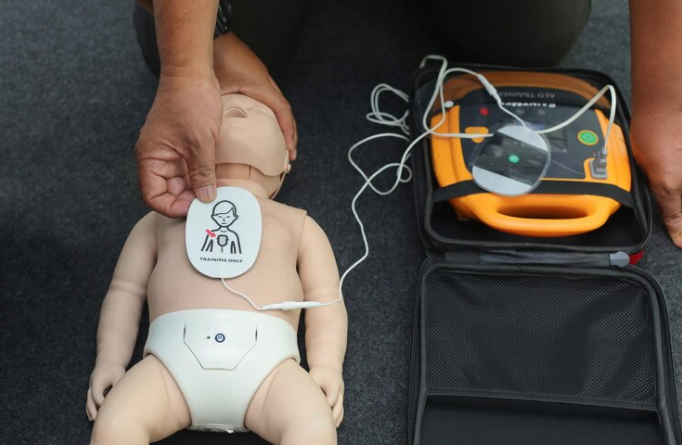Introduction
Assuring the safety of curious toddlers and young children is one of the many joys and challenges that come with being a parent. When babies start to crawl and walk, they frequently explore every corner of the house out of curiosity. Little ones can find electrical socket especially appealing due to their accessible design. The Electrical Safety Foundation International said that every year, about 2,400 youngsters get severe burns and shocks as a result of sticking objects into electrical outlets. These are alarming numbers. This sobering fact highlights the significance of child-proofing electrical outlets as a vital component of establishing a secure home for kids.
A toddler’s world is full of adventures; there is always a riddle to solve and a treasure to be found in every part of the house. Though vital to their growth, this natural curiosity can occasionally put kids in danger, particularly when it comes to domestic concerns like electrical plugs. The mystery surrounding electrical outlets attracts kids into risky circumstances on a yearly basis, so it’s critical for parents and caregivers to make childproofing these potential hazards a top priority.
Recognizing the Hazards
The potential for both electrical shock and foreign item insertion are the two risks associated with electrical socket. Since they tend to explore with their hands and have a limited understanding of danger, children under the age of six are particularly vulnerable. The psychological component is just as significant. Electrical outlets have a face-like appearance that might catch a youngster’s interest, and seeing adults use them often can encourage a child to want to do the same. The first step in properly protecting kids from damage is realizing these risks.
Electrical outlets are easy accessible to inquisitive little explorers since they are usually located at a low height. In addition to the risk of electric shock, there is a chance that objects will be inserted into the sockets, which could result in fatalities or major injuries. Young children and toddlers are particularly vulnerable because of their weak comprehension of danger and inclination to explore with their hands and lips.

One often underestimates the physical attraction that electrical plugs have for children. Their design, which frequently has the appearance of a face with eyes and a mouth, might catch a child’s interest. Furthermore, young infants may become imitative when they witness adults plugging and unplugging electronics since they are unable to understand the danger involved in these behaviors.
Kinds of Covers for Childproof Sockets
Plastic Covers for Plug-Ins: These straightforward gadgets are extensively utilized since they are affordable and readily available. Nevertheless, if they are small enough to be ingested, they could present a choking hazard. Additionally, older children might remove them, which would reduce their usefulness.
Sliding Plate Covers: These covers offer a permanent hold and are a more sophisticated solution. A spring-loaded plate covers the socket holes when the plug is taken out. Because of their dependability, these are especially helpful in homes with regular plug usage and are highly recommended by safety experts.
Box Covers: These covers completely surround the outlet and the plug, leaving just room for the cord, making them perfect for outlets that are used frequently (such those for TVs or kitchen appliances). For many homeowners, this can be a disadvantage because they are more pronounced and hefty.
Installation and Use Instructions
Plug-in covers don’t need to be installed, however sliding plate and box covers do require some handyman work. Generally speaking, sliding plate covers require a screwdriver to remove the old outlet cover and install the sliding plate cover in its place. To keep the installation from turning into a hazard in and of itself, it is imperative to make sure that it is secure.
Maintaining the effectiveness of covers requires routine maintenance checks, particularly in homes with several children. The type of cover used affects how the installation is done. Installing plastic plug-in covers only requires putting the cover into the empty socket. But it’s important to make sure that these coverings are just tight enough to keep adults from being able to remove them, without making it impossible for children to take off.
Some simple tools may be required for sliding plate covers, which typically replace the current socket plate. To guarantee functionality and safety, it’s imperative to strictly adhere to the manufacturer’s instructions. It’s also critical to do routine maintenance and inspections to guarantee that the covers hold up over time.
Extra Safety precautions
It is advised to carry out a home safety check in addition to socket covers. This include utilizing Ground Fault Circuit Interrupters (GFCIs) in damp locations such as bathrooms and kitchens, making sure all main appliances are grounded, and looking for and fastening any loose wires. A comprehensive child-proofing strategy must also include teaching older children about the dangers of electricity.

Selecting the Proper Product
When choosing socket covers, take into account aspects like durability, adult-user-friendliness, and compliance with safety requirements (such as those established by the Consumer Product Safety Commission in the U.S.). Because of their dedication to safety and wide range of products, brands like Safety 1st and Dreambaby are frequently suggested. Hardware stores, baby specialty shops, and internet merchants carry these products.
Aspects of Law and Compliance
It is essential to comprehend the legal and regulatory elements. Many child-proofing solutions meet or beyond the tamper-resistant receptacle requirement set forth by the National Electrical Code (NEC) for newly constructed and remodeled homes in the United States. It is imperative that building managers and landlords understand their roles in maintaining the security of their facilities.
Professional Views and Guidance
Experts in safety, electricity, and pediatrics frequently stress the value of a multi-layered child-proofing strategy. This entails supervision and teaching in addition to structural barriers like outlet covers. They encourage routine evaluations of home safety precautions and caution against depending too much on any one safety product.
True Narratives and Case Studies
Adding parent anecdotes and accident-related lessons can offer a relatable and powerful viewpoint. These tales can provide helpful guidance based on real-life experiences and frequently draw attention to hazards that are often missed.
Conclusion
Child-proofing is a continuous process that evolves as kids get older and their surroundings do too. Parents and other caregivers can greatly lower the risks associated with electrical socket by selecting the appropriate socket covers, installing them appropriately, and combining them with additional safety precautions and education. Resources like the Consumer Product Safety Commission and the Electrical Safety Foundation International provide a plethora of recommendations and information on electrical safety and child-proofing.
We hope you found this information helpful in your journey to create a safer environment for your family. At GuardWell Safety, we understand that every home is unique, and so are your child-proofing needs. That’s why we offer a Free Child-Proofing Consultation tailored to your specific requirements. Let our experts help you identify potential hazards and provide personalized solutions to make your home a secure haven for your little ones. Book your free consultation today and take the first step towards peace of mind.






